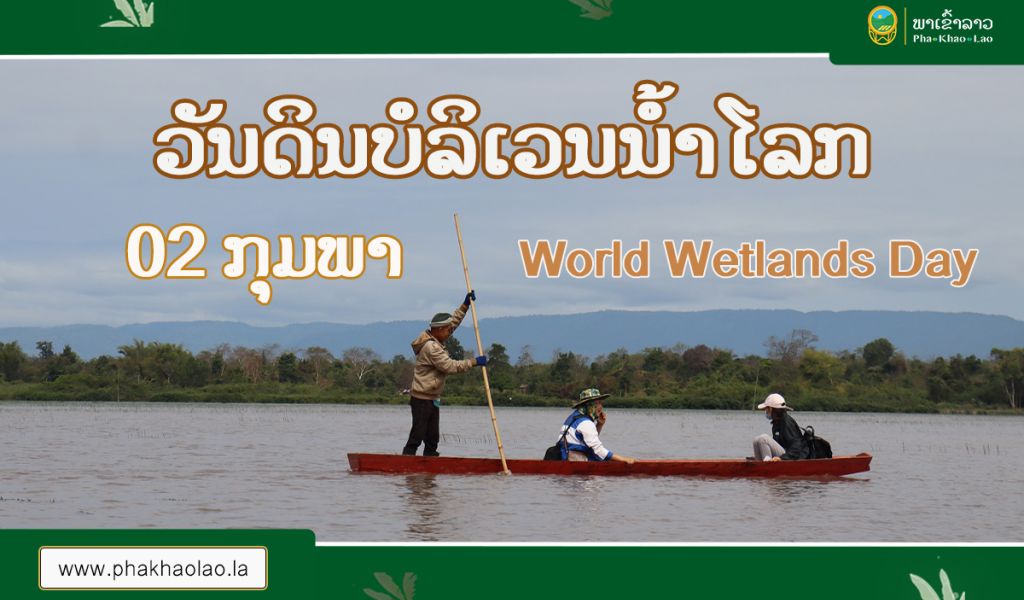World Wetlands Day

The Ramsar Convention defines wetlands as areas of marsh, fen, peat or water, whether natural or artificial, permanent or temporary, with water that is static or flowing, fresh, brackish or salty, including areas of marine waters, the depth of which at low tides does not exceed six meters (Daconto, 2001.).
Wetlands are very important ecosystems that provide a multitude of benefits for humans and the environment. They act as filters, removing pollutants and contaminants from water. They absorb and store water during periods of heavy rain, helping to prevent flooding and protect communities from damage, and they provide essential habitats for a wide variety of plants and animals, including many threatened and endangered species.
The Pha Khao Lao database features 138 animal species and 197 plant species found in the wetlands of the Lao PDR. In a study conducted in seven wetlands in Vientiane Province, the Pha Khao Lao team found that local communities mainly use fish and plant species as food and for medicinal purposes. They also use wetland species as construction materials, sources of oil, and for decorative purposes. Ngom, located at the foot zone of Phou Khao Khouay, was found to be the wetland with the highest number of species in the province.
However, the wetlands of the Lao PDR are threatened. Land-based investments, urban sprawl, and poor implementation of conservation regulations by local communities are among the main challenges identified in Vientiane Province. These factors can lead to the degradation and loss of wetland habitats, threatening the biodiversity and ecological functions of these areas.
Source:
- Nafri.org.la http://lad.nafri.org.la/fulltext/1600-0.pdf
- Final report Putting peatland resources onto the mental map in Laos
